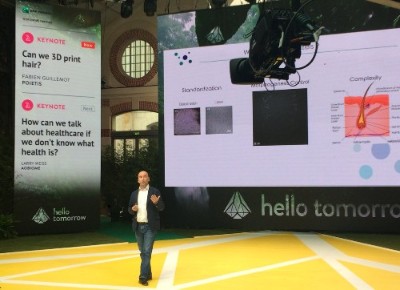For a long time I have wanted to write a post on hair loss research at the Singapore based Agency for Science, Technology and Research (also known by the creative acronym A*STAR). I have even listed it in my page on the most important hair loss cure research centers around the world.
Singapore A*STAR Research
More specifically, within this A*STAR research institute lies the Skin and Hair Research department, led by Dr. Tom Dawson. Also of interest is the Hair Pigmentation department (edit: no longer active it seems), led by Dr. Carlos Clavel.
Dr. Dawson is fairly renowned in the hair research world. In fact, last year he was one of the main speakers and moderators at the 25th World Congress of the ISHRS in Prague. His seemingly interesting lecture was titled “Imaginative New Ideas to Stimulate Hair Growth”. Most likely, it entailed some of the below discussed findings.
Update: September 2020 — New findings conclude that fine-tuning stem cell metabolism prevents hair loss. The researchers were based in Cologne and Helsinki.
The Energetics of Growing Hair Follicles
In July 2017, Dr. Dawson and his team published a highly interesting study in the Journal of Investigative Dermatology, energetically titled: “Compartmentation of Mitochondrial and Oxidative Metabolism in Growing Hair Follicles: A Ring of Fire”. This work also entailed collaboration with researchers from the Medical University of South Carolina Pharmacy School Department of Drug Discovery.
However, an article about this now 6-month old paper only showed up in my alerts this week and was provocatively titled “The age-old search for a cure for hair loss may be close to an end”. At first I was skeptical about this research because of this exaggerated title. Moreover, the US based source for this article was not any educational or research institute.
However, later on I found out that the original source of this story is the reputable Singapore based A*STAR institute itself. They published the same article several days ago. Interestingly enough, they titled the article differently (“Getting to the root of hair loss”), but used the same provocative “The age-old search for a cure for hair loss may be close to an end” sentence as a second level heading.
Energy, Metabolism and the Hair Follicle
The main points to take away from this latest study (and my non-scientist opinions) are that:
- A slowing metabolism potentially plays a key role in hair follicle aging and subsequent hair loss. The researchers call this phenomenon “chronogenetic alopecia”.
- However, in my opinion, androgenetic alopecia (aka male pattern hair loss) is to some extent also influenced by aging. Most men only experience significant androgenetic alopecia after the age of 30 to 40 despite having an influx of male hormones (in particular, testosterone and dihydrotesterstone) as early as age 13.
- According to Mr. Dawson, hair growth is a highly energy-intensive process. He mentions a very interesting fact in that an average human grows almost two meters of hair over his/her body per hour. He also discussed specific energy needs for this process.
- Stopping the formation of reactive oxygen species (ROS) and maintaining mitochondrial metabolism might be the secret to maintaining high quality hair as we age.
- Key quote from Mr. Dawson:
“If we use materials such as leave-on creams or lotions that alter metabolism, you can change the way hair grows and make follicles survive longer and produce better hair.”
I recently discussed how it seems like humans are losing their scalp hair more rapidly and earlier than in past generations. Perhaps part of this can be explained by our modern sedentary lifestyles and bad diets worsening our metabolism (and increasing our waistlines, insulin resistance rates and diabetes rates)?

